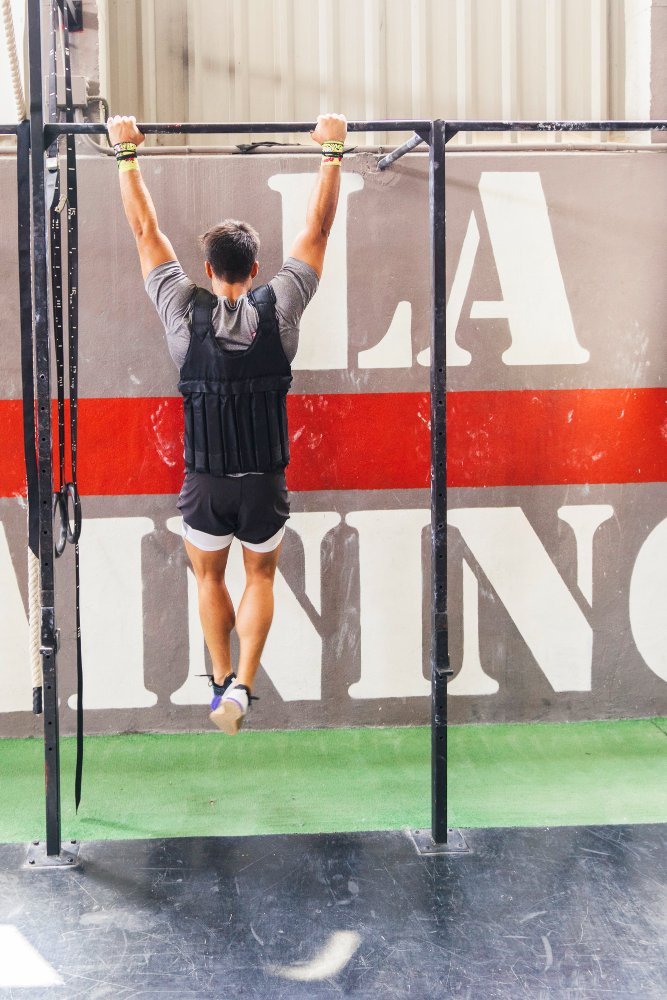In the dynamic world of fitness, enthusiasts are always on the lookout for exercises that offer a comprehensive upper body workout. One such hidden gem is the “prone trap raise.” This article explores the nuances of this exercise, from its benefits to proper execution, ensuring you unlock its full potential in your fitness journey.
Benefits of Prone Trap Raise

Strengthening the upper back muscles
The prone trap raise specifically targets the trapezius muscles, helping to build strength and definition in the upper back. This not only contributes to a well-rounded physique but also improves overall back health.
Improving posture
In the era of sedentary lifestyles, poor posture has become a common woe. The prone trap raise engages key muscles responsible for maintaining an upright posture, making it an excellent addition to combat the adverse effects of prolonged sitting.
Enhancing shoulder stability
Shoulder stability is crucial in various physical activities. By incorporating prone trap raises into your routine, you can fortify the muscles around the shoulders, reducing the risk of injuries and enhancing overall stability.
How to Perform Prone Trap Raise
Executing the prone trap raise correctly is vital for reaping its benefits without risking injury.
Proper body positioning
Begin by lying face down on a flat surface with your arms extended straight in front of you. Lift your chest slightly off the ground, engaging your core muscles.
Step-by-step guide with images
- Start with light weights, gradually increasing as you become more comfortable.
- Lift your arms towards the ceiling, focusing on the contraction in your upper back.
- Lower your arms back to the starting position in a controlled manner.
- Repeat for the recommended number of repetitions.
Common Mistakes to Avoid
Overarching the back
Maintain a neutral spine throughout the exercise. Overarching can lead to unnecessary strain on the lower back.
Lifting too much weight
Choose a weight that challenges you without compromising form. Lifting excessively heavy weights can lead to improper execution and potential injuries.
Incorrect hand positioning
Ensure your palms are facing each other during the movement. This helps target the intended muscles and prevents unnecessary stress on the wrists.
Muscles Targeted by Prone Trap Raise

The beauty of the prone trap raise lies in its ability to isolate and engage specific muscle groups.
Trapezius muscles
The trapezius muscles, often overlooked, play a crucial role in upper body function. Prone trap raises bring focused attention to these muscles, promoting balanced development.
Rhomboids
Located between the shoulder blades, the rhomboids contribute to shoulder stability and posture. Regular inclusion of prone trap raises helps activate and strengthen these essential muscles.
Rear deltoids
The posterior part of the shoulder, the rear deltoids, benefits from the controlled movement of the prone trap raise, aiding in a well-rounded shoulder development.
Incorporating Prone Trap Raise into Your Workout Routine
Frequency and sets
For beginners, start with 2-3 sets of 10-12 repetitions, gradually increasing as you progress. Advanced practitioners can incorporate prone trap raises into their upper body workout 2-3 times a week.
Combining with other exercises
Pairing prone trap raises with complementary exercises, such as rows and lat pulldowns, creates a comprehensive upper body workout routine. This synergy maximizes the benefits of each exercise.
For Core: Humble Row Exercise for a Stronger Core
Progression Tips for Prone Trap Raise
Gradual increase in weight
As your strength improves, challenge yourself by incrementally increasing the weight. This progressive approach ensures continuous growth without risking injury.
Variations for advanced practitioners
For those seeking an extra challenge, consider incorporating variations like single-arm prone trap raises or using an incline bench. These modifications engage muscles in slightly different ways, promoting overall development.
Precautions and Considerations
While prone trap raises offer numerous benefits, it’s essential to approach them with caution.
Consulting with a fitness professional
Before adding new exercises to your routine, especially if you have pre-existing health conditions, consult with a fitness professional or healthcare provider. They can provide personalized advice based on your individual needs.
Listening to your body
Pay attention to any discomfort or strain during the exercise. If you experience pain beyond normal muscle fatigue, it’s crucial to reassess your form and, if needed, seek guidance from a fitness expert.
Real-life Success Stories
Personal experiences with incorporating prone trap raise
“I was struggling with poor posture due to long hours at my desk. Introducing prone trap raises into my routine made a significant difference. Not only did my upper back feel stronger, but I also noticed improvements in how I carried myself throughout the day.”
Equipment Needed for Prone Trap Raise
Minimal equipment required
Prone trap raises can be performed with minimal equipment. All you need is a flat surface and a set of dumbbells. For those working out at home, improvised weights like water bottles can also suffice.
DIY alternatives
Don’t have access to dumbbells? Get creative with household items. A sturdy backpack filled with books can serve as a makeshift weight, ensuring you can still enjoy the benefits of prone trap raises.
FAQs about Prone Trap Raise
- Is prone trap raise suitable for beginners?
- Yes, it’s beginner-friendly, but start with lighter weights to master the form.
- How often should I do prone trap raises?
- Beginners can start with 2-3 times a week, gradually increasing frequency.
- Can prone trap raises help with shoulder pain?
- When done correctly, prone trap raises can contribute to shoulder stability and alleviate pain.
- Are there alternatives to dumbbells for prone trap raises?
- Yes, household items like water bottles or a backpack with books can be used.
- Can I do prone trap raises with pre-existing back issues?
- Consult with a healthcare professional before incorporating prone trap raises if you have back issues.
Conclusion
Incorporating prone trap raises into your fitness routine can be a game-changer, offering a myriad of benefits from improved posture to strengthened upper back muscles. Remember, consistency is key. As you embark on this fitness journey, pay attention to your body, progress gradually, and celebrate the small victories along the way.


[…] Trap raise: Mastering the Prone Trap Raise for Ultimate Strength […]